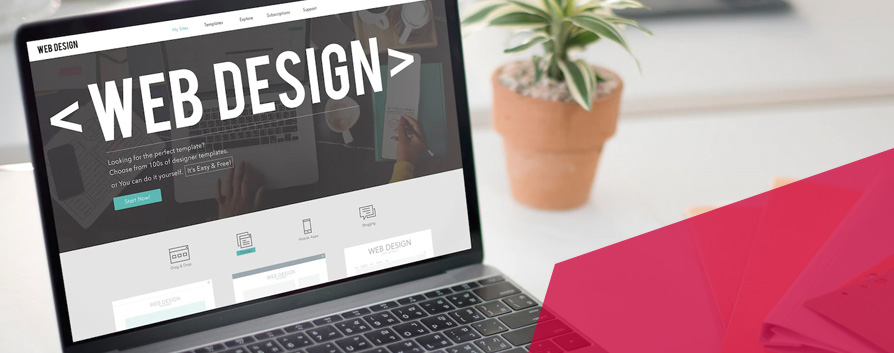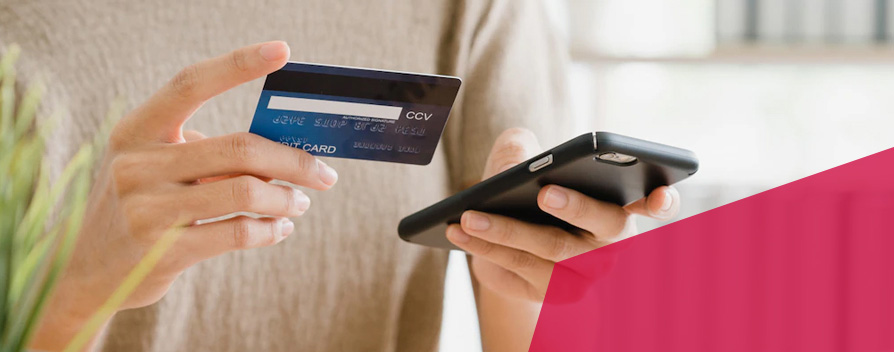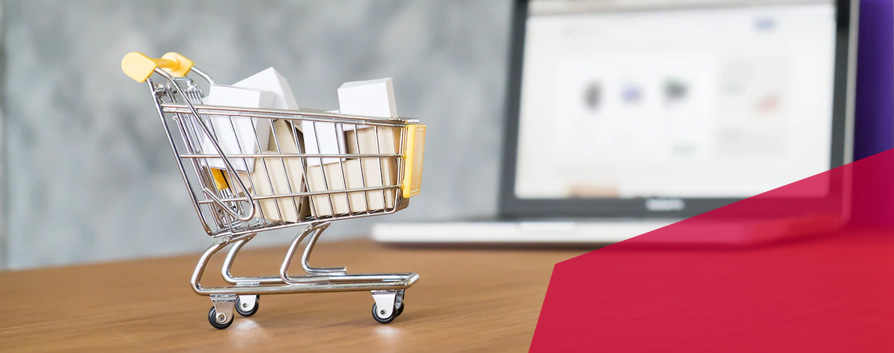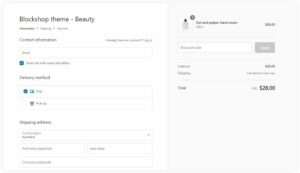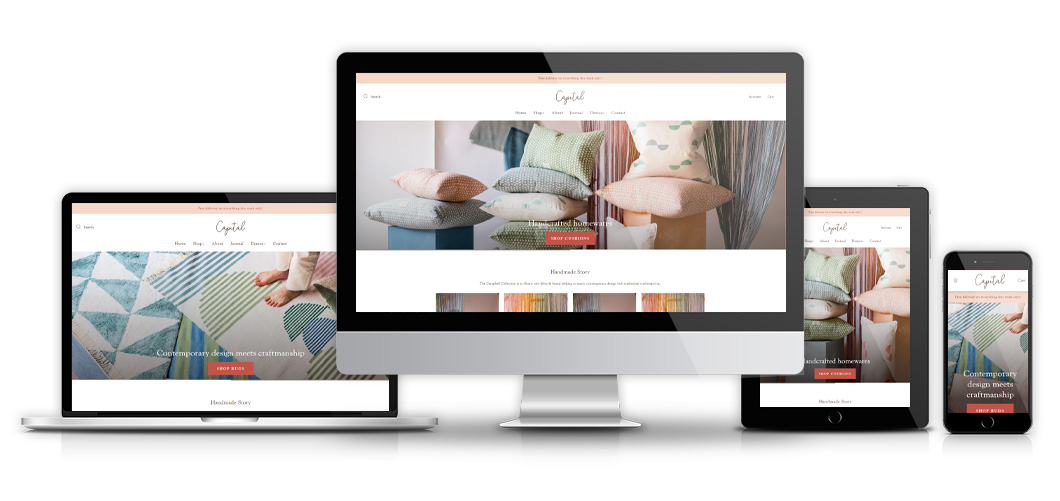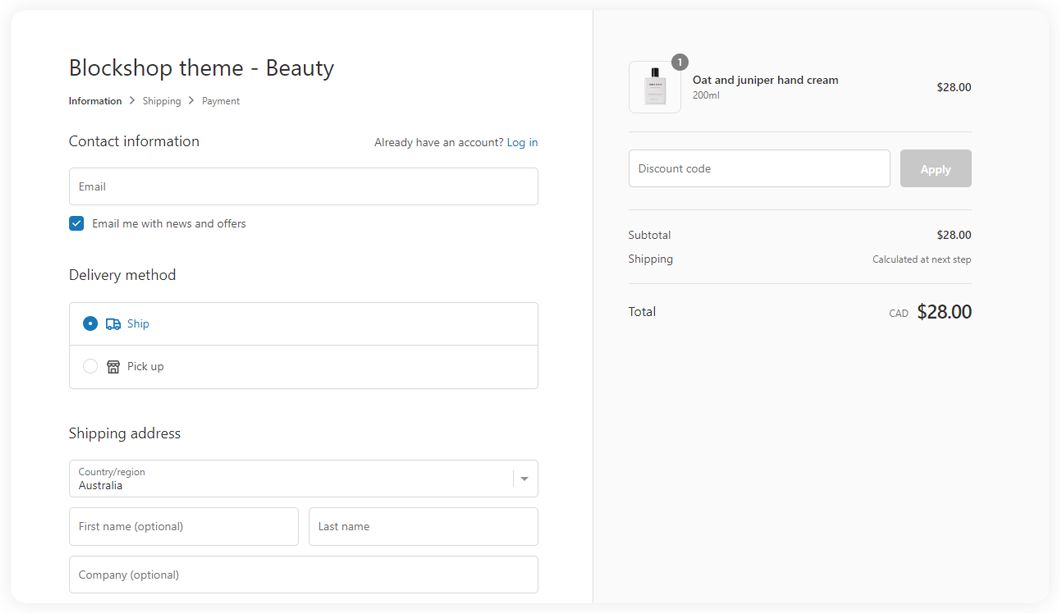I hope you enjoy reading this blog post.
If you want to discuss your website, we're here to help! Talk to Johannah.
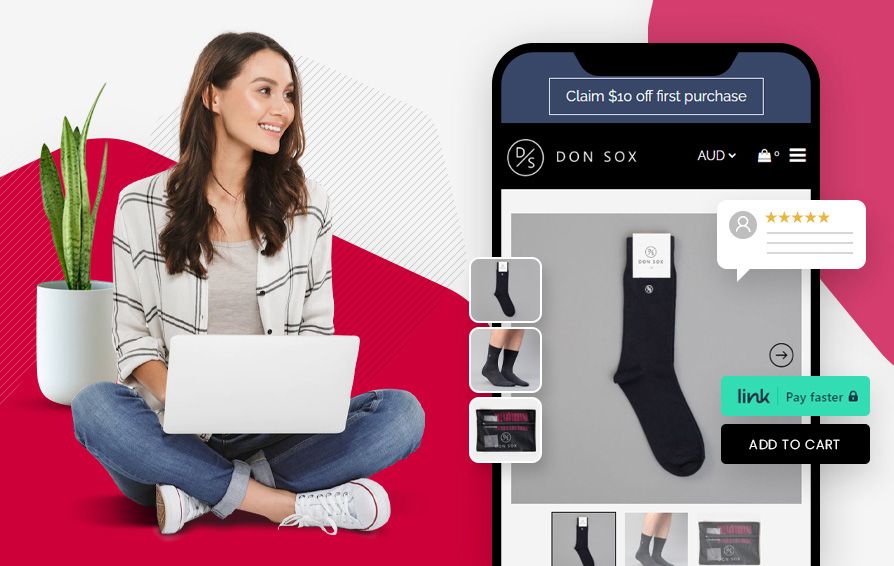
7 Steps For Developing An Ecommerce Website
Did you know there’s around 24 million active ecommerce websites in the world! With that much competition, it’s important to stand out in the crowd. That’s why team at Confetti Design decided to put together the 7 steps for developing an eccommerce website to help small business owners with their online success.
So how do you make sure that your ecommerce website is found by the right people?
It takes more than you might think to develop a successful ecommerce website. An ecommerce website developer needs to think about not just the technical functionality of the website, but also its branding, its features, and how it all needs to come together to deliver a seamless user experience.
If you’re considering developing an ecommerce website, here’s our 7-step process to get you started.
Step 1. Determine your business goals
Selling online is hard work and it’s important to have a plan. What do you want to achieve with your store? Saying “I want to make money” is not enough – you need to determine what milestones you want to hit, and how you’re going to make that happen.
For instance –
- How will you drive traffic to your store?
- What will your brand stand for, and how will you represent that in your design?
- What growth do you want to see in terms of weekly sales volume?
- What measures will you incorporate to grow your customer list?
- What’s your plan for ensuring good customer lifetime value?
- How will your inventory change over the first 5 years?
Once you have your end-goals clear, it’s a matter of reverse-engineering your way there. Which is far more achievable than throwing a wish into the wind!
Step 2. Decide on your build method
There are basically two routes for building an ecommerce store – either build it yourself using a product such as Wix or WordPress, or work with an ecommerce website designer to get a custom built store.
While online website builders such as Wix may look like an attractive option for a novice designer, it’s important to remember that first impressions can make or break your store’s reputation in the eyes of your target market. And if your store is designed using a similar template as thousands of others, you won’t stand out in the crowd.
On top of this, websites built on DIY platforms often have slow loading times and limited functionality. Meaning it will be difficult to give your visitors the experience you want, which in turn lowers your brand value.
So while the thought of having your ecommerce store up quickly and easily may appeal, in reality you’re never going to get a high degree of quality from a cookie-cutter website. Creating an outstanding ecommerce website takes work and time. But if you do it properly, the end result will be worth the wait.
Ecommerce website professionals – like us here Confetti Design – are experts at what we do. We understand what a website needs to be successful, and can develop an ecommerce website that’s not only visually stunning but also is easy to use, both for you and your customers.
Step 3. Clarify your intended shopping experience
This step involves thinking about your brand, and putting yourself in your intended customers’ shoes. What are your customers looking for when shopping in your store, and how will you facilitate that experience for them?
For example, if you sell a small range of high end products, you might plan to incorporate a price comparison feature that allows them to drill down on the fine details. Or you may feature a chat concierge where customers can talk in real-time with your customer service staff to help them make their decision.
Whereas if you sell a large range of mass-produced products, your customers might be price shoppers and want to make decisions quickly. So you would need to have advanced filtering so customers can search by size, colour and price with the click of a button. Fast one-page checkout and clear shipping options would be a must too. As well as promotions and discounts advertised throughout your store.
Step 4. Decide on the functionality to include when developing an ecommerce website
There are many different features you can include in your store, and what you end up with will depend on your business model and unique needs. That being said, certain functionality is absolutely necessary for your store to be successful.
User-friendly navigation
Customers are generally impatient and if they cannot find what they are looking for quickly, they’ll likely get fed up and leave the store. Whether your product range is small or large, it’s important to ensure that it’s categorised in a way that makes sense and developing an ecommerce website menu that allows customers to find what they’re looking for easily.
At Confetti Design, we ensure that any point of the website can be navigated to in less than 3 clicks. To achieve this we use in-page links, mobile-friendly menus and footer links that display the right information in the right way.
Product reviews
User ratings and reviews are crucial for the sales process, as they provide social proof that your products work. Incorporating independent user-generated reviews into your ecommerce website through platforms such as TrustPilot or Loox build instant credibility and trust with your potential customers. Make sure your reviews are clearly visible on your product pages and home page along with your hero product images.
Product photography
The more clearly your customers can see your products, the more likely they are to buy. Your photography needs to be high quality with a white background so that your customers can make out the detail in your products. Include functionality for multiple photos taken from multiple angles to give your customers a 360 degree view.
Call to action buttons
These may seem obvious but you’d be surprised at how many stores get their buttons wrong. Make sure your buttons are highly visible and grab attention. Develop an ecommerce website using bold colours and benefit-focused copy drives more purchases than traditional ‘buy now’ buttons.
Mobile responsive design
According to a report by PayPal, 26.4% of all ecommerce transactions happen on mobile, dwarfing transactions made over laptop and desktop. And that number is expected to increase as we become increasingly attached to our phones.
Any ecommerce store these days should be designed with mobile display as a primary priority. Links and buttons should not be too small or too close together. Your pages should display smoothly and cleanly on mobile, and not cramp up your products. Popups should be customised to appear on a smaller screen without disrupting the user’s experience.
Payments and checkout
With all the different payment options available these days, it’s crucial for your business to accept payments in the ways your customers like to pay. That means incorporating Apple Pay, PayPal and mobile wallets as well as traditional credit cards.
A flexible and seamless payment process not only helps to avoid checkout abandonment, but it also gives your store a more professional feel which build consumer trust. Keep your eye on the methods your customers prefer and give them the options they want. Otherwise they may decide to shop with your competition instead.
Step 5. Decide on your platform
There are many different platforms and software available for building your store, and each has its advantages and disadvantages. Some of the most popular ecommerce website builders include WooCommerce, Shopify or Shopify Plus, Magento, and Big Commerce.
Choosing the right one for your store can be overwhelming when you don’t understand the functionality of each, as well as how nicely they interact with other functionality you will need such as apps and gateways.
Ecommerce website development experts like the team here at Confetti Design can help you decide on exactly which options are right for your needs in terms of functionality, ease of use, and price.
Step 6. Prepare your products
While your ecommerce website designer is building your website, you’ll need to prepare your product range to be uploaded before going live. Make sure your products all have high quality images and detailed product descriptions.
Particularly for products that involve some complexity or have a high niche, your product descriptions play a crucial part in the sale by communicating the details to customers that they cannot learn from the product’s picture, such as size, materials, and other relevant information.
Organising this information in a .csv file will allow your web developer to upload your content with minimal delay and no errors.
Step 7. Prepare for launch!
Once you move your website into the final stages of production, it’s time to QA it and ensure everything looks and works as it’s supposed to. Here’s a quick checklist of the basics –
- Go over every page and look for errors in information and spelling mistakes in your product descriptions.
- Click all the links and ensure that your pages are all in correct working order.
- Go through the checkout process and ensure your payment gateways are connected.
- Make sure your shipping and tax settings are correct.
- Test your coupon codes are applying at checkout.
- Ensure your page is loading quickly and that all images are optimised.
Wrapping things up
Hopefully this article has given you a better idea of what it takes to launch an ecommerce website. The process to developing an ecommerce website is complex and involves a lot of moving parts, but working with an ecommerce store designer makes the process smooth and takes out the stress. Plus you end up with a store that stands out from the crowd for all the right reasons, and is custom-geared for success!
If you are considering building an ecommerce store, or are looking to upgrade your current store with a new design and slick functionality, Confetti Design are ecommerce experts with years of experience in building custom stores our clients love.
FAQs About Developing an Ecommerce Website
What does an ecommerce website developer do?
Ecommerce website developers make sure that your store is designed in a way that is both functional and beautiful. They use a range of skills including programming and design to ensure that your brand comes to life and your customers get an ideal shopping experience that keeps them coming back again and again.
Can I just build an ecommerce store myself?
There are plenty of tools available online to create your own ecommerce store. But these tools are usually quite basic in their functionality and as a result, your website will be lacking features it needs to provide a superior customer experience. Plus if you don’t know what you’re doing, it’s easy to make a huge mistake that can result in performance issues and even security risks.
At the end of the day, your time is far better spent on tasks you’re good at. As the saying goes, ‘If you think it’s expensive to hire a professional, just wait until you hire an amateur!’
How can a professional help me in developing an ecommerce website?
An ecommerce developer will be able to help you with all aspects of your store’s development. From the initial planning, through the design stages and building in functionality, to testing and tweaking the site until it’s ready to launch and beyond, professional ecommerce developers take the stress out of what is actually quite a complex process.
Should I use WordPress and WooCommerce for my ecommerce store design?
At Confetti Design we recommend WordPress and Woocommerce because unlike many ‘off the rack’ ecommerce website design solutions, they offer a high rate of customisation. Which means you’re able to have your individual needs and goals met far more adequately than if you used a cookie cutter solution that didn’t offer the same flexibility.
Should I use a professional ecommerce website designer for my small business?
You definitely can, and in fact we recommend it! At Confetti Design we believe it’s best to do things right the first time rather than taking a cheaper or faster route and having to rework your entire website in the future. Our websites are designed to have the functionality already built-in for when you’re ready to grow, so that you can scale quickly and easily.
Should I use Australian based ecommerce website designers?
Rule number one of marketing is ‘know your market’. By working with Australian ecommerce website designers such as Confetti Design, you’re partnering with people that understand Australian market trends and consumers. We also know how to overcome specific hurdles that might pop up along the way.
It’s also far more convenient working with an Aussie rather than trying to navigate time zones for meetings, or have to wait 9 hours to have a support question answered! We’re up and working at the same time you are. Which is much easier for everyone.
Ready to Set Up Your Shopify Ecommerce Website?
Have you got an existing online store that needs to be taken to a whole new level? Are you looking to build your first Shopify ecommerce website, but don’t know where to start?
You’re in the right place. As Shopify experts in Melbourne, we’re passionate about helping business owners with their ecommerce websites. Confetti Design will work with you to prioritise your goals while being sensitive to your budget.
Our team has extensive Shopify design, development and marketing experience and can walk you through any customisation options. Give us a call or complete an estimate request to talk with our Shopify expert developers.
We can help

Johannah Barton
Johannah is founder and owner of Confetti Design, a leading Melbourne Shopify Agency. Her extensive background in fashion, interior design, sales and marketing contributes to the Agencies great ability and reputation. She creates content that helps small businesses navigate the online space helping them to consider their website as a sales tool.
Read more


